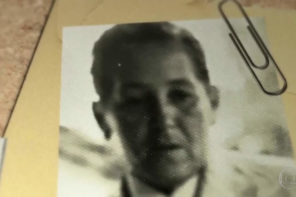The growing visibility of transgender people in mainstream media highlights the need for trans people to be prepared for the steady stream of media opportunities that are coming our way. While hiring media training consultants is beyond the budget of most of us, TransGuys.com’s Media Training 101 brings together expert advice and resources to help trans men get the most out of these important interactions with the media.
While many trans folks are happy to do interviews with the media without any experience or training—usually in the name of visibility—the stakes are high. When interacting with the media, you have to be able to convey your message simply yet powerfully, and in a matter of minutes (or even seconds in the case of TV), regardless of the complexity of transgender issues. This requires deep knowledge of the subject matter, advanced verbal skills, and mastery of the art of persuasion. Add to these the pressure of being confronted by a professional interviewer, plus a potentially vast audience, and it’s clear that “winging it” is not an acceptable approach to interacting with the media.
Before you think about accepting that interview request, you need to learn the rules of game and come up with a strategy to improve your odds of a successful outcome. You need media training.
“If a trans person is going to talk to the media, it’s a good idea to get some media training to learn the best practices that will result in a good experience,” says Nick Adams, Director of Transgender Media & Representation at GLAAD. “Telling your story in the media is a skill, and like any other skill, it really helps to have both training and practice.”
Actor, writer and diversity speaker Scott Turner Schofield strongly agrees on the need for trans people to have training before speaking to the media. “Just being transgender is not the resumé for being an advocate! Anyone who wishes to speak to the general public on transgender issues needs media training. It’s not about towing some kind of party line on your opinions. The issues are too sensitive, and we are at a phase in popular culture where we can’t just spout whatever we feel is true. People’s lives are at stake.”
So, What Is Media Training?
Media training helps people learn the essential skills needed to comfortably and effectively communicate with the media. Media training can help you:
- Clarify your message;
- Become more quotable;
- Look and sound better on camera;
- Learn how to control an interview and handle any type of question.
Now that we’re familiar with what media training is and why we need it, where can a trans guy find media training? Or more precisely, where can a trans guy find affordable media training?
Media Training at Your Fingertips
If you’re the “self-starter” type, the place to start looking for media training information is your favorite search engine. One of the first results you’re likely to find is GLAAD’s Transgender Advocates Media Training presentation, which provides a wealth of tips for helping you improve your interactions with the media:
- Profiling your target audience
- Messaging and framing: effective and ineffective frames
- Telling your story: qualification, affirmative statements, supporting data
- Being succinct is key. You should be able to tell your story or get your talking points in, in 200 words or less.
- Speaking to shared values
- Creating and practicing talking points
- Interview preparation:
- Anticipate questions that will be asked
- ASK what questions will be asked
- NOTHING is off record!
- Do your homework
- Familiarize yourself with the person you’ll be interviewed by
- Get all your facts organized and memorized
- How to answer on your own terms: “…which brings us back to the bigger issue…” “…that’s actually a common misconception…”
- Don’t be afraid to take a deep breath and start over if you have to.
- PRACTICE!
- What to do after your story runs
Also see:
- GLAAD’s Media Reference Guide is intended to be used by journalists and creators in entertainment media, but the tips and glossary can also be helpful to anyone seeking a greater understanding of effectively interacting with the media.
- Cision.com’s 11 Guidelines for Media Training
Free Media Training Sessions
While not necessarily common, free (and almost-free) media training sessions are available from time to time. “GLAAD offers free media trainings to groups, often at trans conferences, and occasionally to individuals, especially if a trans person has been thrust into the media spotlight through circumstance,” says Adams, who co-presented media training workshops with Chaz Bono on the 2010 trans conference circuit.
Be on the lookout for non-profits and other organizations who offer media trainings at low or no cost. For example, in 2013 NewOrganizing offered a free 3-day intensive media training course in New York City entitled “Public Narrative Training for Transgender Organizers.”
Schofield also recommends seeking out local leaders. “Go to your local LGBT Center—someone there has had training and may be able to help you. Barring that, reach out to organizations like GLSEN and GLAAD and PFLAG.”
Private Media Training
Schofield is no stranger to interacting with the media. One of his most recent achievements was landing the role of Nick on the soap opera, The Bold & The Beautiful, making him the first openly transgender actor to play a major role on daytime television. Despite a busy taping schedule at CBS Television City in Los Angeles, Schofield is finding the time to create an affordable course on media training. He also currently offers a one-on-one or group tutorial, “Speaking and Writing for Public Consumption.” Conducted by Skype or phone, the training is offered on a sliding scale. Find out more here.
Expert Tips on Media Training
Adams and Schofield were kind enough to each share three important media training tips for our readers, offering up a veritable gold mine of helpful information.
Nick Adams:
1) Know your boundaries before you talk to any journalist. Decide in advance if you will reveal your birth name, supply “before and after” photos, and discuss surgeries and medical transition. GLAAD recommends that, in general, trans people avoid all of those topics when talking to a reporter.
2) Tell your own story and don’t over-generalize about all transgender people. Our community is incredibly diverse, and one person can’t possibly speak on behalf of the entire community. As much as possible, use “I” statements; for example, “I feel,” or “I think,” or “It’s my understanding,” or “In my experience.” Help the reporter find other people to interview who can talk about different ways of being trans. For example, if you’re white, recommend a person of color to talk about how being transgender intersects with issues of race, or recommend a trans woman if you’re a trans man. If you transitioned later in life, recommend a young person who transitioned much earlier than you did.
3) Think about the audience you’re speaking to. You’re not really talking to the reporter – you’re talking to the people who will see this story. Who are those people? The audience for your local daily newspaper will be very different than the audience reading your local LGBT newspaper. Talk about things you think will resonate with each particular audience. You may be able to speak with more nuance about the trans experience with the local LGBT paper, but you may need to keep it more basic for the daily paper.
Scott Turner Schofield:
1) Be able to speak about your privilege as men (and your race if you are/look white) at the same time as you talk about the dangers of being trans.
2) Do not compare our movement to the African American Civil Rights Movement. We share some similarities, but it is too easy to appropriate a history that does not belong to us.
3) Know the actual facts. GLAAD has a million statistics. What you feel is different from fact, and it is your responsibility to tell the facts with feeling.
Taking an hour to learn the facts, and what not to do or say, plus another few hours on polishing your talk, is the first step you need to take if you want to become an advocate. [It’s] important to me that people know what they’re talking about and say it well for the betterment of our community.
The time is now. Whether you’re already talking to journalists, or are just about to take the leap into the lion’s cage of mainstream media, getting media training now will ensure that you’re prepared for any media opportunity that comes your way.
Related resource: Advocacy tips – Here are nine tips for becoming a good advocate.
Last updated: 10/08/19





>2) Do not compare our movement to the African American Civil Rights Movement. We share some similarities, but it is too easy to appropriate a history that does not belong to us.
Unless it does belong to us, because some of us are also black…